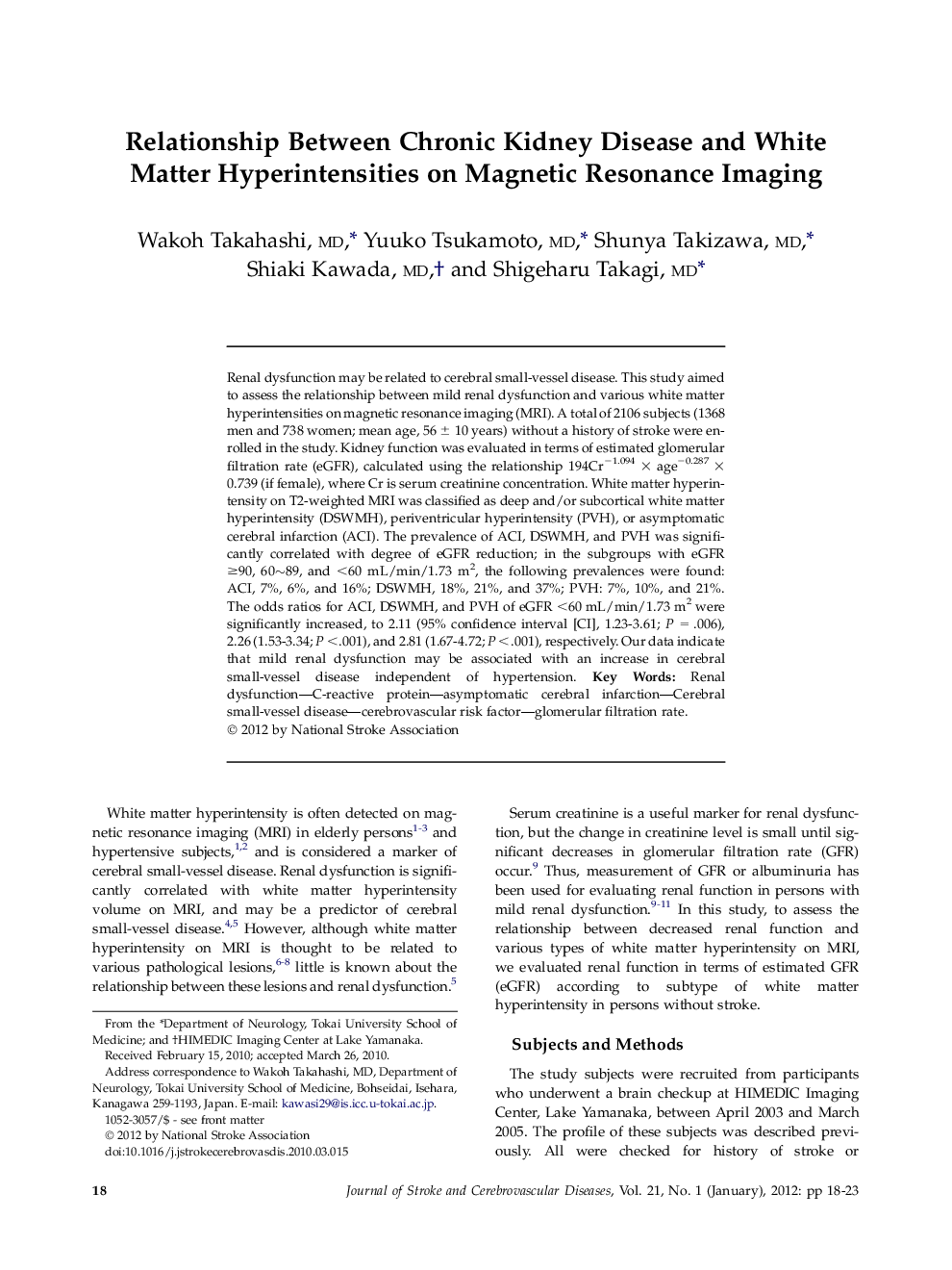| Article ID | Journal | Published Year | Pages | File Type |
|---|---|---|---|---|
| 2706487 | Journal of Stroke and Cerebrovascular Diseases | 2012 | 6 Pages |
Renal dysfunction may be related to cerebral small-vessel disease. This study aimed to assess the relationship between mild renal dysfunction and various white matter hyperintensities on magnetic resonance imaging (MRI). A total of 2106 subjects (1368 men and 738 women; mean age, 56 ± 10 years) without a history of stroke were enrolled in the study. Kidney function was evaluated in terms of estimated glomerular filtration rate (eGFR), calculated using the relationship 194Cr−1.094 × age−0.287 × 0.739 (if female), where Cr is serum creatinine concentration. White matter hyperintensity on T2-weighted MRI was classified as deep and/or subcortical white matter hyperintensity (DSWMH), periventricular hyperintensity (PVH), or asymptomatic cerebral infarction (ACI). The prevalence of ACI, DSWMH, and PVH was significantly correlated with degree of eGFR reduction; in the subgroups with eGFR ≥90, 60∼89, and <60 mL/min/1.73 m2, the following prevalences were found: ACI, 7%, 6%, and 16%; DSWMH, 18%, 21%, and 37%; PVH: 7%, 10%, and 21%. The odds ratios for ACI, DSWMH, and PVH of eGFR <60 mL/min/1.73 m2 were significantly increased, to 2.11 (95% confidence interval [CI], 1.23-3.61; P = .006), 2.26 (1.53-3.34; P < .001), and 2.81 (1.67-4.72; P < .001), respectively. Our data indicate that mild renal dysfunction may be associated with an increase in cerebral small-vessel disease independent of hypertension.
